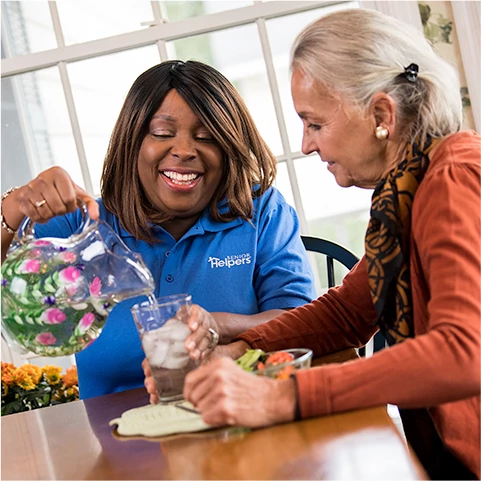Parkinson's disease is a progressive neurological disorder that affects a person's movement. As the disease progresses, individuals with Parkinson's may require assistance with daily tasks to maintain their independence. Caregivers play a crucial role in providing support and ensuring the well-being of their loved ones with Parkinson's. This article explores various home assistance techniques that can help both Parkinson's patients and caregivers navigate daily challenges and promote independence.

Adapting the Home Environment
Modifying the home environment can make daily activities easier and safer for individuals with Parkinson's. Simple adjustments can significantly improve independence and quality of life. Here are some home assistance techniques to consider:
Declutter and Organize
- Remove tripping hazards such as loose rugs and cluttered pathways.
- Organize commonly used items within easy reach to minimize reaching and bending.
- Ensure good lighting in all areas of the home to reduce the risk of falls.
Install Grab Bars and Handrails
- Install grab bars in the bathroom near the toilet and shower to provide support and prevent falls.
- Add handrails along staircases and hallways to assist with balance and mobility.
Use Assistive Devices
- Consider using mobility aids such as canes, walkers, or wheelchairs to improve stability and independence.
- Use adaptive utensils and tools with larger grips to make eating and writing easier.
- Implement technology solutions such as voice-activated devices or smart home systems for added convenience.
Promoting Safe Mobility
Mobility issues are common in Parkinson's disease and can impact a person's ability to move around independently. By incorporating specific strategies and techniques, individuals with Parkinson's can maintain their mobility and reduce the risk of falls. Here are some tips for promoting safe mobility:
Encourage Regular Exercise
- Engage in physical activities such as walking, swimming, or tai chi to improve balance, strength, and flexibility.
- Work with a physical therapist to develop a tailored exercise program that addresses specific mobility challenges.
Practice Good Posture and Gait
- Focus on maintaining proper posture and alignment to prevent stooping and balance issues.
- Avoid shuffling feet and take deliberate steps to maintain a steady gait.
Use Mobility Aids Appropriately
- Ensure that mobility aids are properly adjusted to the individual's height and comfort level.
- Practice using aids such as canes or walkers regularly to build confidence and proficiency.
- Seek guidance from a healthcare professional on the correct use of mobility devices.
Assisting with Daily Activities
Simple daily activities like dressing, grooming, and eating can become challenging for individuals with Parkinson's. Caregivers can provide valuable assistance and support in these areas to enhance the patient's independence. Here are some techniques for assisting with daily activities:
Break Tasks into Manageable Steps
- Divide tasks like dressing or grooming into smaller, more manageable steps to reduce frustration and fatigue.
- Offer verbal cues and gentle reminders to help the individual stay focused and on track.
Provide Physical Assistance When Needed
- Assist with buttoning shirts, zipping up jackets, or tying shoelaces if fine motor skills are compromised.
- Support the individual while walking or transferring from one position to another to prevent falls.
Promote Independence and Dignity
- Encourage the individual to do as much as they can independently while offering assistance as needed.
- Respect their preferences and allow them to make choices to maintain a sense of control and dignity.
Seeking Professional Help and Support
Managing Parkinson's disease can be complex, and caregivers may need additional support to provide the best possible care. Seeking help from healthcare professionals, support groups, and community resources can make a significant difference in the well-being of both the patient and caregiver. Here are some avenues to explore:
Consult with Healthcare Providers
- Regularly communicate with doctors, therapists, and specialists to address any changes in the patient's condition and adjust treatment plans accordingly.
- Seek guidance on medication management, symptom control, and lifestyle modifications to improve quality of life.
Join Support Groups
- Connect with local Parkinson's disease support groups to share experiences, exchange information, and gain emotional support.
- Attend educational workshops and seminars to learn more about managing Parkinson's symptoms and caregiving strategies.
Explore Respite Care Options
- Consider respite care services to give caregivers a break and prevent burnout from constant caregiving responsibilities.
- Explore in-home care providers or day programs that offer temporary relief for caregivers while ensuring the patient's well-being.
In conclusion, supporting independence for Parkinson's patients requires a combination of home assistance techniques, mobility strategies, personal care assistance, and professional support. By implementing these approaches, both individuals with Parkinson's and their caregivers can navigate daily challenges more effectively and maintain a higher quality of life.
